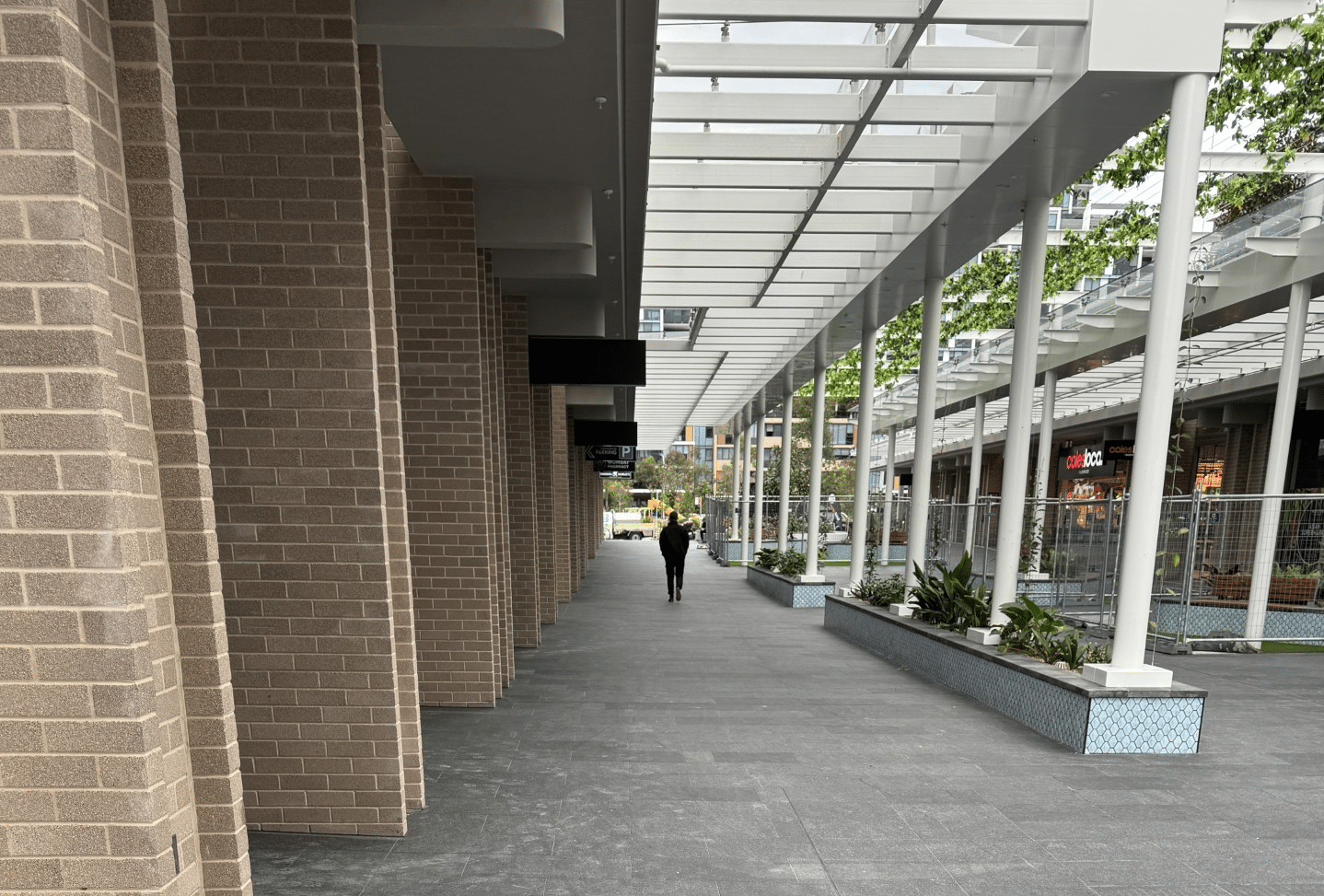
The importance of a safe and comfortable wind environment in the vicinity of new buildings is now acknowledged by project managers and architects alike. A study by Rose and Dolega (2021) involving over 2000 major high street retail outlets in the UK has found that wind is the most significant weather condition to impact consumer purchasing behaviour. Developers are beginning to realise the economic benefits of ensuring a favourable wind environment in areas that involve commercial activities, especially where their success hinges on the success of the retail or commercial tenants. Planning approvals relating to wind mitigations are far more streamlined when the pedestrian wind comfort study is undertaken at the early planning stage. Wind tunnel testing remains the most reliable means of predicting and alleviating wind problems around urban structures. It is possible to achieve similar reliability using bespoke CFD modelling (also offered by Windtech). Another advantage of investigating pedestrian wind comfort early in the design process is that it allows for elegant wind mitigation solutions that are properly integrated with the architecture rather than tacky add-ons.

A recently completed development in Sydney incorporating wind mitigations for al fresco dining areas.
A word of caution when using the cheaper commercial packages as they tend to provide erroneous and misleading guidance, which would frustrate the design process when very different guidance is eventually obtained from wind tunnel tests. Windtech is unique in their ability to offer preliminary desktop assessments that would tend to be far more accurate than the cheaper CFD model studies, due to the depth of experience of their senior staff.
Wind testing that is properly undertaken (refer to the AWES-QAM-01 2019) provides an accurate and definitive assessment of wind comfort conditions prevailing in the critical outdoor areas within or adjacent to the site and collectively create wind resilient communities. Wind velocities are measured in the wind tunnel for areas accessible by pedestrians and occupants. The measured wind conditions are directly compared to comfort criteria that vary, depending on the intended use, as well as against the safety limit.
Testing of wind mitigations is highly recommended as it allows for the verification of the effectiveness of the wind mitigation. This also allows the wind engineer to optimise the extent of wind mitigations. It also enables innovative solutions and informed design choices, while also ensuring compliance with local planning controls.
Windtech is the preferred consultant for pedestrian wind comfort studies by many major developers around the world for the following reasons:
Windtech Director, Tony Rofail recalls an example of a tower development (see below) where Windtech had taken over from another wind consultant; “We were approached by a developer in Melbourne who were faced the prospect of incorporating deeper setbacks of the tower from the edge of the podium, based on advice from their wind engineering consultant. We noted that the podium levels above Ground consisted entirely of carpark levels.
Making these levels porous, resulted in the alleviation of the downwash effects from the tower’s exposure to the prevailing northerly winds and served to provide natural ventilation for the carpark levels. This is a win-win for the client as it meant that no increased tower setbacks are needed as well as savings on the mechanical plant in the carpark floors.”
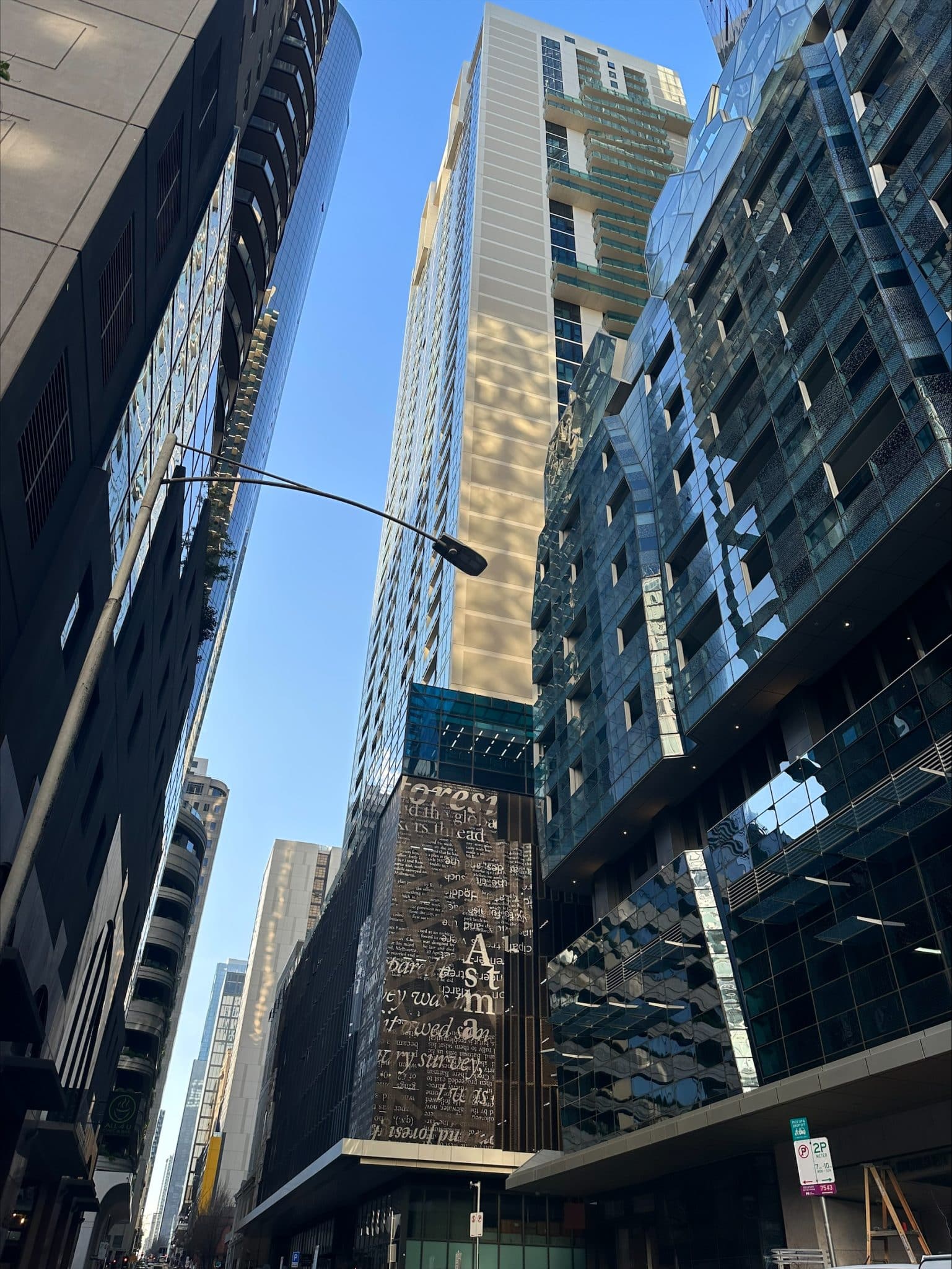
Windtech have 10 offices around the world to service our clients globally. You may reach us from anywhere by sending details of your project to reception@windtechglobal.com.
References:
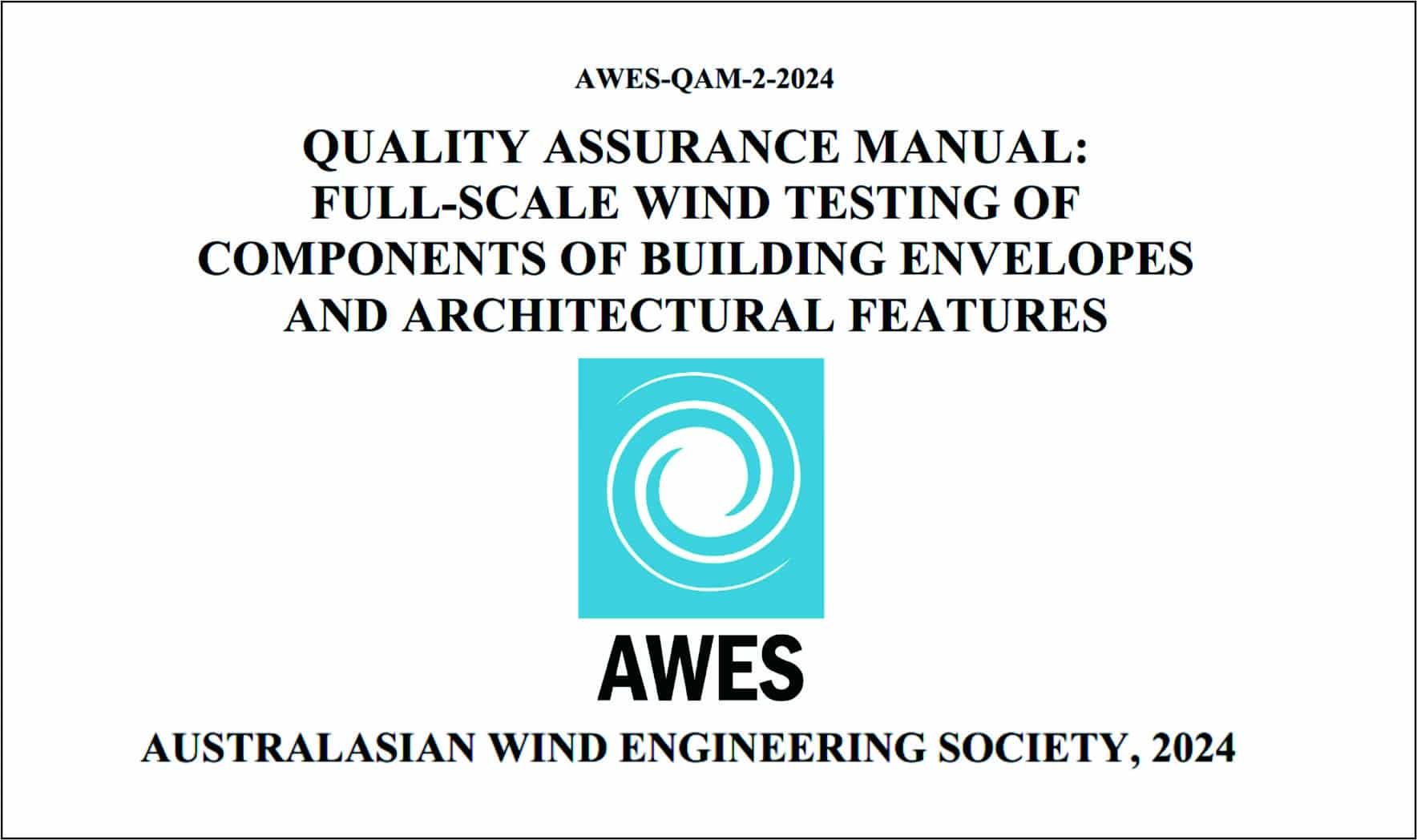
Windtech Director, Tony Rofail was commissioned by the Australasian Wind Engineering Society in February 2023 to spearhead the development of this much-needed Quality Assurance Manual.
A committee was formed which consisted of Dr Nick Truong (Windtech director), Dr Ahmed Faheem (Windtech Associate Director) as well as representatives from the Cyclone Testing Station, CPP, Insol, MEL and Mott MacDonald.
The document was completed in January 2024 and was adopted by the AWES Executive Committee in May 2024. The QAM is free for anyone to download from the following link: AWES-QAM-2-2024
This is the first such Quality Assurance Manual and deals with the minimum requirements for full-scale testing of components of building envelopes and architectural features.
Covers testing for intricate or finer details on building envelopes not covered by AS/NZS1170.2 and require full-scale (or in some cases a very large scale) tests. Such elements can include:
Covers testing for façade elements and other objects that are likely to exhibit significant resonant excitation and/or wake interference. Such elements can include:
Covers testing of the functionality of façade components under strong wind conditions. Such elements can include:
This section covers the key procedural details in conducting a wind noise test, such as test configurations, methods of recording the noise levels and spectra, positioning of the microphone etc.
Windtech continues to be heavily involved in the various committees around the world which preside over anything wind engineering related. We are committed to contributing and sharing knowledge to ensure that the wind engineering industry continues to develop progressively. Click here to view our wind engineering services.
If you are working on any projects that could benefit from the capabilities presented in this article, please contact our dedicated wind engineers in our regional offices Sydney & Melbourne, Australia, London, UK, and Mumbai, India. New York & Miami, USA, Dubai, Hong Kong & Singapore, we guarantee to support you wherever you are based.
To get regular updates on news and events, please follow us on our LinkedIn page.
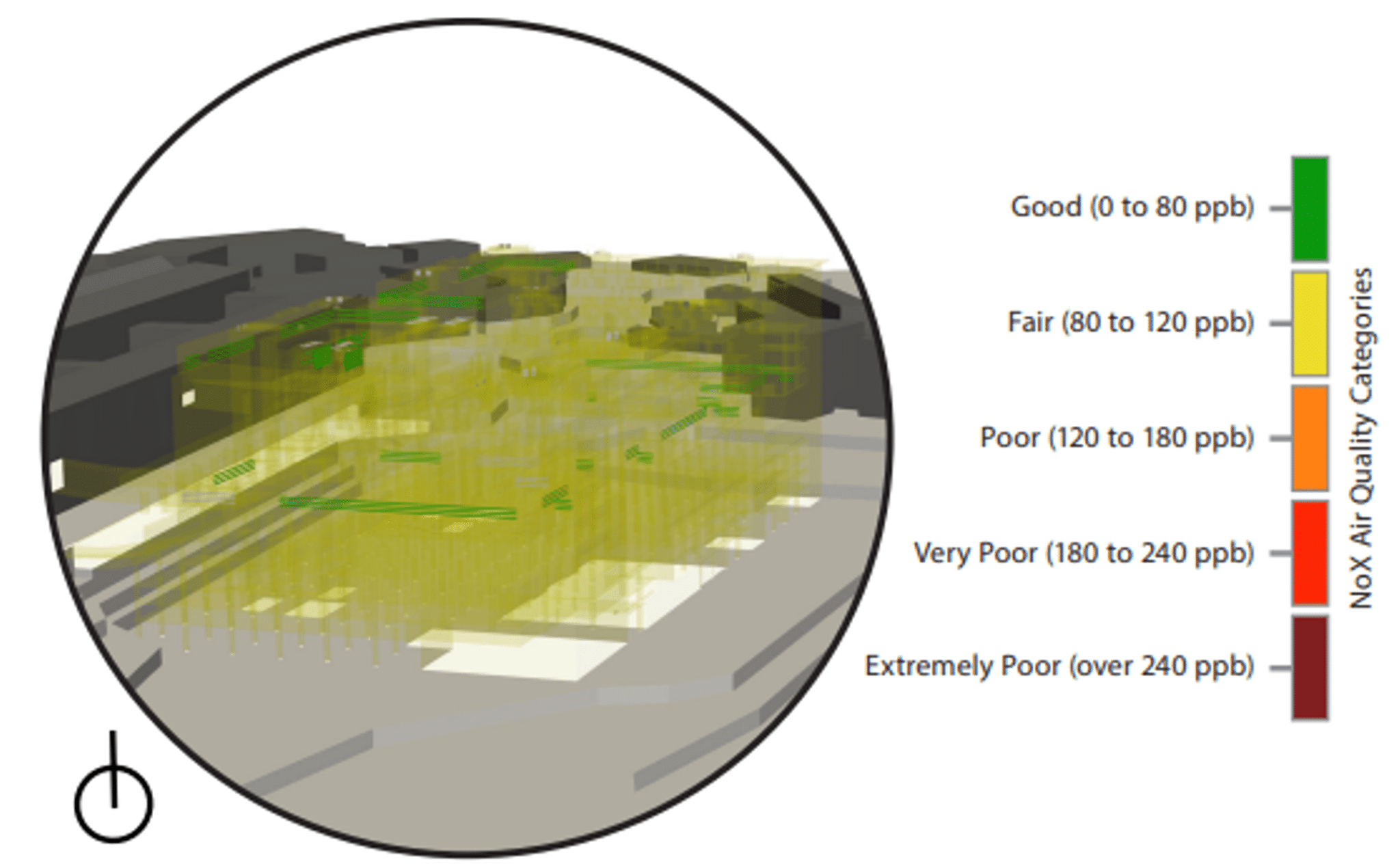
Windtech was commissioned by Health Infrastructure NSW and Multiplex to undertake a holistic assessment to ensure the operational integrity of the helipad infrastructure for the John Hunter Health and Innovation Precinct (JHHIP), Newcastle. To meet this operational need, Windtech conducted the following studies:
Through “Desktop” analysis, we were able to assess the likely impact of the redevelopment of the John Hunter Health and Innovation Precinct (JHHIP), located in Newcastle, on the local wind environment at the critical outdoor areas within and around the subject site, the wind entry effects, and the effect of the helicopter travelling to and from the helipads.
Furthermore, our team conducted detailed evaluations of wind speed and turbulence specific to the Acute Services Building Helipad, identifying potential hazards and implementing tailored strategies to mitigate risks and ensure safer and effective aircraft operations.
Implementing CFD modelling methodologies, Windtech conducted an Air Quality/Pollution Dispersion Study, to analyse the dispersion patterns of helicopter exhaust plumes onto the ASB Building air intakes. This comprehensive assessment assessed the effect of the proposed design on the spread of NOX compounds on and around the site. The cumulative directionally weighted average of the NOX results showed no exceedance at the HVAC intakes of the proposed development. Moderately strong odours were predicted in certain areas and various mitigation treatments were recommended.
Figure 1: Cumulative NOX Contours weighted by frequency of occurrence of each wind direction, Plan View
Figure 2: Cumulative NOX Contours weighted by frequency of occurrence of each wind direction, Eastern Aspect
Figure 3: CO Air Quality Category contours. Cumulative CO Contours weighted by frequency of occurrence of each wind direction. Contours are plotted 1.5m from ground (Left) and 1.5m from floor level of the terraces (Right)
Windtech Consultants are committed to providing accurate and reliable modelling to guide the design of helipads to enable safe and functional operation.
If you are working on any projects that could benefit from the capabilities presented in this article, please reach out to our regional offices Sydney & Melbourne, Australia, London, UK, Mumbai, India. New York & Miami, USA, Dubai, Hong Kong, Singapore, and Toronto, Canada we guarantee to support you wherever you are based.
To get regular updates on news and events, please follow us on our LinkedIn page.
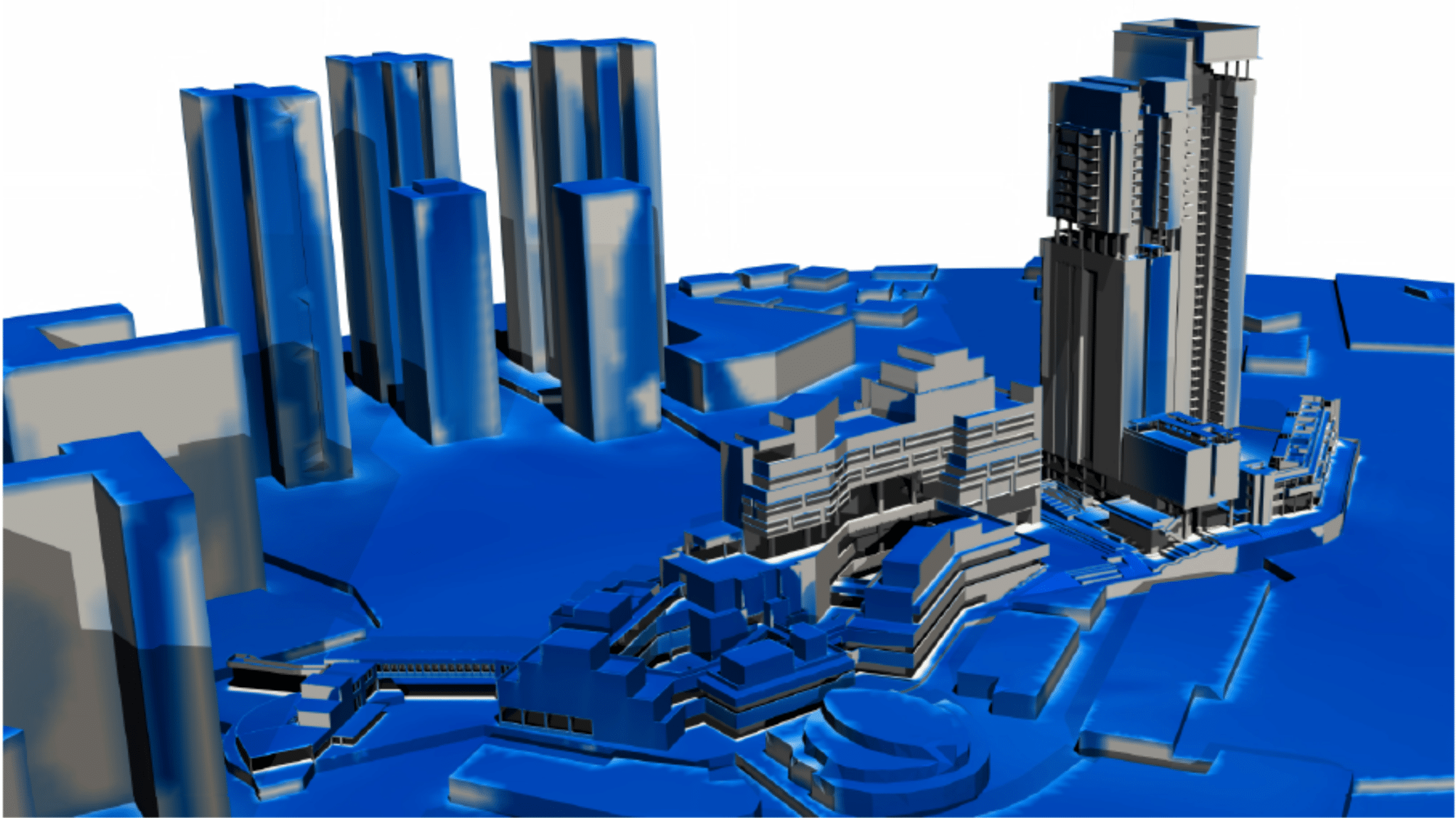
In the realm of architecture and urban planning, the challenges posed by wind-driven rain (WDR) are often underestimated, leading to significant form and aesthetic consequences for buildings. This article delves into the critical role of Windtech’s Computational Fluid Dynamics (CFD) Wind Driven Rain studies in addressing these challenges, offering innovative solutions that revolutionize building design and occupant comfort.
The issues arising from neglecting WDR in architectural design are profound. Inadequate consideration of WDR can result in water infiltration, causing damage to building materials, building contents as well as infrastructure such as lifts and escalators. This results in reduced lifespan of structures, and increased maintenance costs. Moreover, it can significantly impact the comfort and well-being of occupants, especially in outdoor communal spaces as well as the viability of retail tenancies.
Windtech utilises advanced Computational Fluid Dynamics modelling to accurately simulate the complex interactions between wind, rain, and architectural structures. This technology allows for precise modeling of rain patterns and their impact on buildings under varied wind conditions. By employing CFD, architects and planners can pre-emptively identify potential problem areas in building designs.
Windtech’s CFD studies include accounting for wind speed, wind direction, rain intensity, and the specific architectural features of a building. These elements are crucial in creating accurate models that predict how rain will interact with a structure, thereby enabling more informed design decisions. The key assessment points are as follows:
1. Areas of Concern: Areas on concern are identified and confirmed with the key stakeholders, these may include entrances, terraces, balconies and covered public spaces.
2. Climate analysis: A detailed statistical wind driven rain model is developed for the regions. This includes analysing the relationship between wind speed, wind direction, measured rainfall and rainfall intensity. This model is then refined to match wind conditions at the development site.
3. Simulation of WDR: The wind driven rain is simulated at the site. These simulations model the interaction between then wind and the rain. In these simulations a range of rain droplet sizes are included. The wind may significantly alter the raindrop trajectories, enabling rain to bypass traditional barriers such as overhangs and awnings. Wind can drive rain horizontally (or even upwards, depending on the wind’s velocity and direction) into seemingly protected areas like covered terraces and balconies.
4. Visualizing Wetted Surface Area: The report presents cumulative Wetted Surface Area contours to visualize surface wetting and rain accumulation under canopies and awnings at ground level under different wind conditions. These figures are easy to interpret and summaries the results of multiple simulations.
5. Mitigations Measures: If required mitigation measures can be designed and tested using these results
The Windtech CFD Wind Driven Rain Study for the One Holland Village project in Singapore provides a detailed analysis of the effects of wind-driven rain on the development. The study utilized Computational Fluid Dynamics (CFD) to model and analyze the impact of rain in combination with various wind directions on the structure. Key findings from the study include:
1. Lower Levels Analysis (Levels 1 to 4): The study found that wind-driven rain would be concentrated in sections lacking local shading or overhangs. Areas fully exposed were likely to see moderate rain accumulation, with variations across different wind directions.
2. Elevated Terraces Analysis (Levels 20 and 33): Rain accumulation levels at elevated terraces were strongly correlated with wind direction. The study provided detailed insights into how different areas of these terraces would be affected by rain under various wind conditions.
To address these issues, the study recommended design modifications. These included the implementation of architectural features such as overhangs, screens, or shelters in areas where rain accumulation was predicted to be high. By incorporating these elements, the design aimed to reduce rain penetration into vulnerable areas, thus enhancing the overall functionality and comfort of the building’s spaces. This approach exemplifies how targeted design interventions, informed by
detailed CFD analysis, can effectively mitigate wind-driven rain impacts in urban structures.
In the field of wind-driven rain (WDR) assessment, Windtech sets itself apart with a distinctive performance-based approach. This method is a testament to our commitment to leveraging cutting-edge technology and research in the CFD industry. At Windtech, we utilize the latest published methods and incorporate our own proprietary techniques and tools, ensuring our analysis aligns with current world best practices.
The cornerstone of our methodology is the integration of comprehensive environmental data, advanced CFD modeling, and our proprietary algorithms. This combination enables us to accurately simulate real-world scenarios, providing detailed insights into potential WDR impacts. Our approach goes beyond mere prediction; it offers actionable recommendations for design modifications that can effectively mitigate WDR effects.
Incorporating Windtech’s CFD Wind Driven Rain Study into the design process brings numerous benefits. It leads to structures that are not only visually appealing but also functionally robust against the challenges of wind-driven rain. This approach ensures the longevity of buildings, enhances the comfort of occupants, and promotes sustainable architectural practices.
In conclusion, the Windtech CFD Wind Driven Rain Study is an indispensable tool in modern architecture, offering innovative solutions to the challenges faced in urban environments, particularly in regions prone to intense and frequent rainfall. By embracing such advanced methodologies, Windtech positions itself at the forefront of wind engineering, setting a new standard in the design and sustainability of urban structures. This innovative approach not only addresses the immediate concerns related to WDR but also paves the way for future advancements in architectural resilience and sustainability.
From my student life experience, I know the struggle of spending countless hours on a single paper only to find it’s not meeting the standards. But what if there was another way to streamline the writing process? Enter the paper typer tool, a groundbreaking platform designed to support in producing high-quality academic work with ease and efficiency.
When I decided to do my own research on effective writing aids, I discovered the paper typer service. This platform is a comprehensive suite designed to facilitate various stages of the writing process. Firstly, the Advanced Grammar Checker goes beyond basic corrections, providing detailed feedback on sentence structure and style, which is crucial for polishing your drafts. Secondly, the Plagiarism Detector ensures originality, scanning your work against extensive databases to guarantee the uniqueness of your paper.
Moreover, the platform includes a Citation Wizard that supports all major referencing styles, from APA to Harvard, making the often tedious task of citation swift and accurate. These tools are integrated into a user-friendly interface, allowing easy access and smooth navigation, making it ideal for anyone looking to enhance their writing skills efficiently.
During my student life, I tried various methods to optimize my writing process, but none were as effective as the paper generator. This tool not only aids in generating well-structured drafts but also offers customized suggestions tailored to your specific academic needs. Whether you’re crafting a complex research paper or a simple essay, the platform provides a solid starting point by suggesting relevant topics and structuring your content coherently.
Additionally, the AI-driven process of the paper generator significantly reduces the time you spend on researching and formatting, allowing you to focus more on refining your arguments and enhancing your content. This tool is particularly beneficial for those juggling multiple assignments, as it helps manage workload efficiently, ensuring you meet all your academic deadlines without compromising the quality of your papers.
In conclusion, if you’re looking to elevate your academic writing and simplify the complexities of the writing process, the paper typer tool is an invaluable resource. With its comprehensive suite of writing aids, it provides a robust solution for students aiming to enhance their academic performance. As someone who has navigated the challenges of student life, I can recommend this tool as a reliable companion in your educational journey. Give it a try and see how it can transform your writing process!